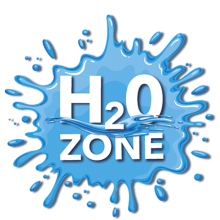Water is restless; it likes to move on a constant journey known as the water cycle. Gravity makes it flow downhill, off your roof, into creeks, down rivers and even over giant waterfalls. Some water soaks into the ground through percolation, but most of it ends up filling the oceans, which cover over two-thirds of the planet.
The water cycle doesn’t end in the oceans though. Water at the sea’s surface is able to defy gravity and climb back up into the sky. How? Because water isn’t always a liquid. In really cold weather, or your freezer, water can freeze into a solid and form what we call “ice.” This is similar to how liquid water turns into ice cubes in a cold freezer. But in warm or dry weather, solar energy can cause water to evaporate into an invisible gas. We call that gas water vapor. When the air has a lot of water vapor in it, we say it is humid. Florida is humid most of the year!
Water vapor can rise up and then condense into tiny droplets that form clouds. From those clouds, water can fall back to the ground through precipitation, such as rain or snow, which keeps the restless water cycle flowing.
Water Cycle Vocabulary
- Solar Energy: energy provided by the sun for the never-ending water cycle
- Evaporation: vapor created when the sun heats water in lakes, streams, rivers or oceans
- Transpiration: vapor created when plants and trees give off moisture
- Condensation: tiny droplets of water formed when water vapor rises into the air and cools
- Precipitation: moisture released when clouds become heavy and form rain, snow and hail
- Percolation: movement of water through the ground
Curious about the path your drinking water takes on earth? Learn more next!



